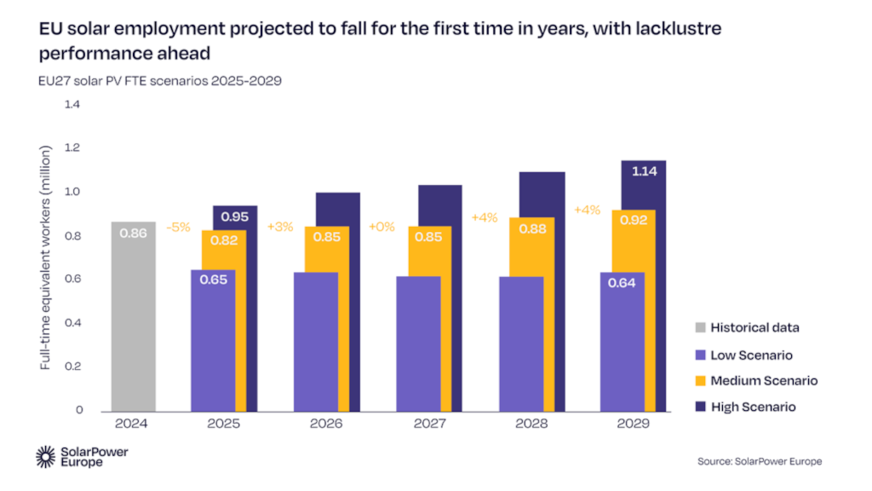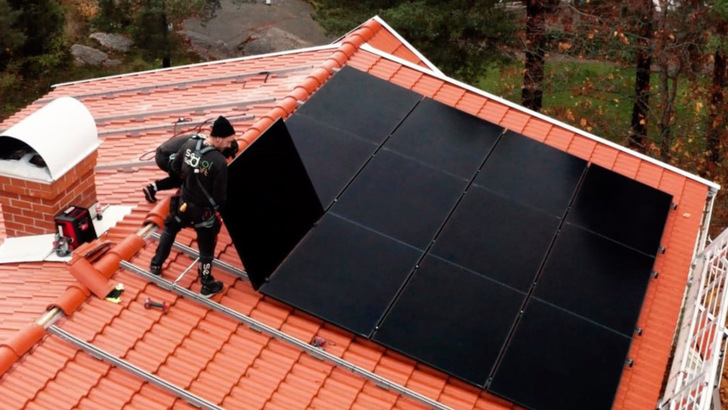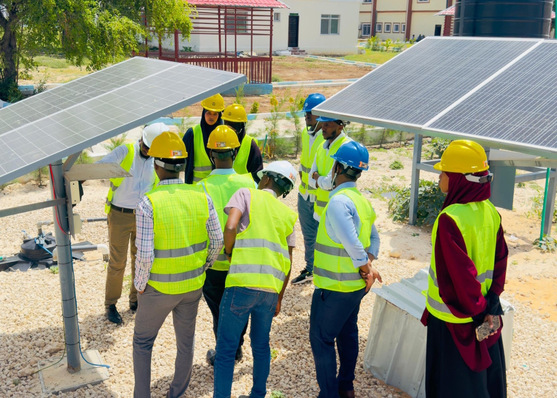Europe’s green job expansion remains a key pillar of the energy transition, with EU solar employment reaching a record 865,000 in 2024 – a 5 percent increase that outpaces the broader EU labour market’s 0.8 percent growth. Significantly, 86 percent of these roles are concentrated in solar deployment, emphasising its critical contribution to renewable energy employment.
Nevertheless, EU solar employment is projected to experience a temporary decline in 2025, decreasing by 5 percent to 825,000 jobs as a result of slower solar deployment and manufacturing challenges. Despite this, the sector is expected to recover and expand steadily, reaching 916,000 jobs by 2029.
Growing skills gap in a booming solar job market
Walburga Hemetsberger, CEO of SolarPower Europe: “In 2025, solar delivers 825,000 quality jobs for Europe. That is incredible. However, this falls short of the 1 million solar job mark we were hoping to reach by now, and for the first time in a decade, solar jobs growth has halted. We can’t ignore this warning. EU leaders have the opportunity to reverse course, stabilise the market, support EU solar manufacturers and strengthen its skills strategy.”
EU rooftop solar workforce shrinking
The disruption to solar workforce growth in 2025 stems from a slowdown in residential solar, driven by the easing of energy crisis impacts and persistent system flexibility challenges. The EU rooftop solar workforce has been contracting over the last three years, decreasing from 73 percent in 2022 to 59 percent in 2024, and is projected to decline further to 56 percent by 2029.

SolarPower Europe
Accordingly, the annual EU Solar Jobs Report has revised its previous projection that the EU would reach 1 million solar jobs by 2027, stating that this milestone is now likely to be achieved only from 2030 onwards.
Germany, Spain and Italy leading
At the national level, notable shifts have occurred. Despite a 17 percent decline in Germany’s solar workforce from 2023 to 2024, the country remains the EU’s largest solar employer, supporting 128,000 jobs. Poland, once the second-largest solar employer, dropped to fourth place with approximately 90,000 jobs as its labour-intensive residential rooftop market contracted.
EU solar stalls as residential rooftop and PPAs segments falter
Spain ranks second with 122,000 solar workers, driven by its focus on the less labour-intensive utility-scale sector, which delivers higher GW capacity with fewer employees. Italy, currently in third place, is projected to surpass Spain by 2029, supported by steady market growth and an increasing emphasis on utility-scale solar projects.
Policy recommendations
To ensure the solar workforce remains aligned with Europe’s decarbonisation goals, the EU Solar Jobs Report outlines a series of policy recommendations:
1. Establish a European Solar Skills Intelligence Hub.
2. Scale and stabilise funding for renewable skills, with simplified access for small and medium-sized enterprises (SMEs).
3. Map existing skills initiatives.
4. Conclude sectoral agreements to enable large-scale retraining.
5. Run coordinated campaigns to enhance the appeal of green technical careers, apprenticeships and vocational training.
6. Promote gender balance and diversity in solar careers.
7. Develop cross-renewable career pathways and portable competence frameworks.
8. Introduce a European Solar Skills Passport.
9. Adopt an electrification-skills strategy that links solar PV to heat, mobility and storage.
10. Invest in advanced digital and artificial intelligence (AI) trainings. (hcn)









